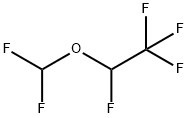Physical properties and Pharmacology of Desflurane
Feb 18,2022
Desflurane is the most recent volatile agent to enter mainstream anaesthetic practice. It has been welcomed for surgical techniques where a fast onset and rapid recovery from anaesthesia are particularly desirable, such as major head and neck surgery.
Maintenance of general anaesthesia.
In addition, its low solubility (blood/gas coefficient) and subsequent smaller volume of distribution are benefificial to patients undergoing lengthy surgery or bariatric patients, in whom the volume of distribution of lipid-soluble drugs is greater.
Physical properties
Desflurane is a colourless agent which is stored in amber-coloured bottles without preservative. It is non-flammable at commercial concentrations. Desflurane is stable in the presence of soda lime but should be protected from light. Desflurane has an ethereal and pungent odour.
Desflurane has a boiling point close to room temperature (23.5°C) and a vapour pressure of 88.5kPa at 20°C. A standard vaporiser cannot be used to deliver desflurane as small temperature and/or pressure fluctuations would result in a variable output. A special vaporiser (TEC 6) has been developed which heats the desflurane to 39°C and pressurises it to 2 atmospheres. The TEC 6 vaporiser therefore requires a source of electricity.
Systemic effects
RS:
• Dose-dependent respiratory depression, with depression of the ventilatory response to PaCO2. This exceeds the effect of other volatile agents at concentrations >1 MAC.
• Irritant to the upper respiratory tract, particularly at concentrations > 6%.
• Stimulation of coughing, breath holding and laryngospasm precludes its use as an induction agent.
CVS:
• Dose-related reduction in SVR, myocardial contractility and MAP.
• Heart rate unchanged at lower steady-state concentrations but increases with higher concentrations.
• Cardiac output tends to be maintained as per isoflurane.
• In concentrations >1 MAC, an increase in sympathetic activity, leading to increased HR and MAP.
• No detectable coronary steal.
• Does not sensitise the myocardium to catecholamines.
CNS:
• Causes general anaesthesia and reduction in cerebral metabolic rate.
• Dose-dependent EEG depression.
• Does not induce seizure activity at any depth of anaesthesia.
• Dose-dependent alteration in cerebral autoregulation (vasodilatation) at concentrations > 1 MAC, which can result in an increase in ICP.
• Dose-dependent muscle relaxation.
• Potentiation of effects of NMBAs.
GI/GU:
• Uterine relaxation.
• Increased risk of PONV.
Other:
• Malignant hyperthermia trigger
Pharmacology
Uptake:
• With a blood/gas partition coefficient of 0.42, equilibration of alveolar with inspired concentrations of desflurane is rapid compared with other available volatile agents. This leads to a rapid onset and recovery from anaesthesia.
Metabolism:
• Approximately 0.02% of inhaled desflurane is metabolised in the body.
Excretion:
• Approximately 99.98% is excreted unchanged from the lungs.
- Related articles
- Related Qustion
This article is about the physical and chemical properties of oleic acid and the description of its preparation and use....
Feb 18,2022Organic ChemistryIsoflurane is a halogenated ethyl methyl ether (1-chloro-2,2,2-trifluoroethyl difluoromethyl ether) and is a geometric isomer of enflurane.....
Feb 18,2022APIDesflurane
57041-67-5You may like
- Desflurane USP/EP/BP
-

- $1.10 / 1g
- 2025-11-18
- CAS:57041-67-5
- Min. Order: 1g
- Purity: 99.9%
- Supply Ability: 100 Tons Min





